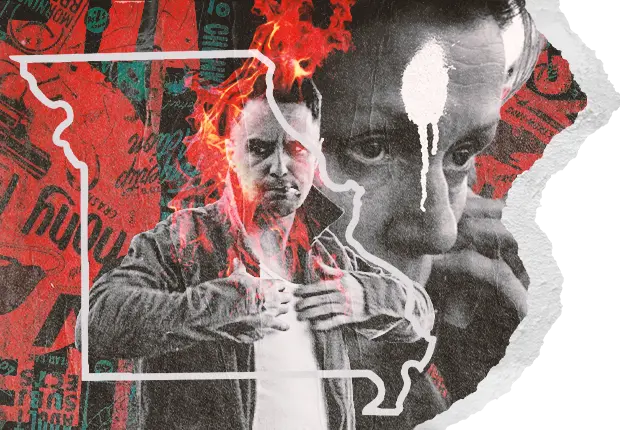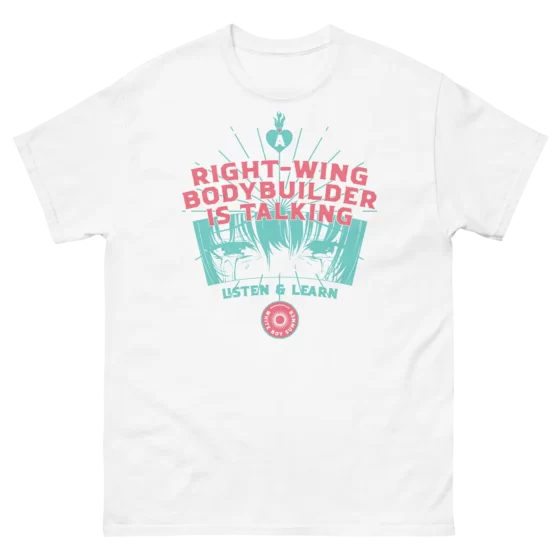Three Billboards Outside Ebbing, Missouri: Seven Years Later
Such women might learn much from Nietzsche’s scathing reproaches: might learn that weakness in itself can never be right, nor matter for a boast, nor a right means of influence. We should seek those stronger than ourselves in order to be cured of our infirmities, not in order to make them servants of our misery.
Maude Petre, Nietzsche and Christianity
In 2017 the film Three Billboards Outside Ebbing, Missouri (TBOEM) was released, a film which simultaneously appeared to the mainstream media as a politically-conscious feminist action blockbuster, but to a small minority of others (this author included) depicted a grimdark psychoanalytic exercise in futility and nihilism. It is not uncommon for a film to illicit multiple reactions from multiple perspectives—indeed it is often the sign of an interesting work of art. What’s apparent here, however, is the incoherence of this film under its own internal logic, and how irreconcilable this film is with its outward intentions, as expressed by writer and director Martin McDonagh. Ultimately, this is a film that fails so hard that it accidentally illuminates the very ideas its protagonist, audience and possibly creator are at pains to reject or ignore.
TBOEM was so obviously made for the moment in 2017. Ferguson, #MeToo, the continued decline of possibilities and aspirations of the American working class—themes which not so much seep into the film as flood it. This is the real-world narrative continuum the film’s producers injected this film into, and in doing so harnessed the collective rage and precariousness of film audiences whilst adding to a rapidly-growing canon of gritty, politically-conscious, female-lead action-dramady. Most people know TBOEM as an in-flight movie, but you can rent it on YouTube in the same category as A Promising Young Woman; Ghostbusters: Afterlife; and I, Tonya; which tells you almost everything you need to know about the target demographic.
It’s now been seven years since the release of the film, which is a nice amount of time to wait to publish an essay, because ideas are bigger than the media cycle and shouldn’t be beholden to it—a fact that intellectually castrates most modern film and cultural critique, including the absolute dross written about TBOEM post-release.
Now that the dust has settled, is it even possible to see this film for what it really is?
The story
Try this plot on for size: Working class woman in overalls and bandana goes on a rampage trying to find the guy who raped and murdered her daughter.
The film pits a badass middle-aged woman (Mildred, played by Francis McDormand) against the local police department tasked with investigating her daughter’s murder, who have no solid leads and don’t appear to be prioritizing her case. From the start of the film this tense stalemate is already well established, and against this fait accompli we are given the following info to help align and guide our sympathies:
- Mildred is a hard-working but worn-out, fed-up middle-aged mother who just wants justice for her daughter.
- The police department is incompetent, as signified by their feet-on-desk laziness and generally dumb, unprofessional manner.
- The police department is also racist and corrupt, because of how much time they spend harassing black people compared to solving crimes.
(1) establishes Mildred as the underdog and sympathetic anti-hero we can all have fun supporting. The incompetence and corruption in (2) and (3) opens up the possibility (or, as the film will argue, the moral justification) for privately administered, highly personalized, direct justice by the aggrieved. Once the audience is on board with that, the film propels us through Mildred’s journey of retributive justice, closure-seeking, and sticking it to the Man.
A few more pieces to put in play before we revisit that journey: she also has a son still at home who is the embodiment of brooding teenage angst and Midwest misery, permanently embarrassed by his mother’s words and actions. Mildred is separated—her ex-boyfriend Charlie is an undifferentiated working-class guy who used to beat Mildred when they were together, but now post-separation he lives a fairly normal happy life elsewhere with his new hot young bimbo girlfriend. His involvement in the lives of Mildred and son Robbie now consists of occasional visits to the family home with predictable discord. Flawed as he is, later in the film Charlie tries to share some wisdom with Mildred once he realizes the path she’s on. Importantly (for the audience), Charlie also reminds Mildred that she was kind of responsible for the household animosity up to and including the night her daughter stormed out of the house and was later raped and murdered, to which Mildred reacts with various shades of guilt and anger.
The main substance of the film is Mildred’s journey of vigilante justice and retribution, during which we indulge in witnessing a series of initially small but escalating, desperate acts of violence and coercion by the underdog directed back at the system that failed her. Ebbing is a fictional shithole town in rural Missouri, where the only people who present as middle-class are the senior police, the dentist and the priest, none of whom seem to have any prior positive dealings with Mildred. Nonetheless, Mildred is at one with her surroundings: she is an abrasive, tough bitch whose relationships with townsfolk and family alike are all at various levels of strain and disrepair. She lashes out at the police for their (in)actions, but is not too concerned with preventing collateral damage to civilians in town, and often brings plenty of leftover resentment back home to what remains of her family. There is no residual hint of whatever mourning they did for their daughter several months ago and she appears to have maintained the same emotional distance from her son as before. During her path of destruction that is the middle third of the runtime, the audience is having fun and Mildred is getting her catharsis, but we are also encouraged to believe that this pattern of behaviour might eventually make things right, and that in the end Mildred’s efforts will be rewarded and justice will be restored by her operating outside the bounds of the system.
At the end of the film, once Mildred has received her pound of flesh and given the system a good shake-up, we see a vague attempt at closing Mildred’s story on a high with the suggestion that more success might await our heroine in the future. But that’s it. Insofar as the film’s ending offers any closing balance of the moral ledger, it’s that the sum total of Mildred’s outbursts of aggression, intimidation, and destruction still put her slightly above the moral standing of the police. What is waiting for Mildred at the end of this journey? It’s left uncertain, but clear that we shouldn’t have high hopes for her. What about for the audience? Depending on your particular complex of prior beliefs, you either felt like you’d just railed half a gram of coke off a stolen copy of How to Be Anti-racist; or felt a kind of hollow, sullen torpor. The fact that McDonagh made this film’s demographic and the media feel the former despite doing everything he can to encourage the latter makes TBOEM a kind of sick postmodern masterpiece.
Problems with Writer’s Intentions
If the above synopsis leaves you feeling unsatisfied it’s because you should be, so now’s a good time to examine the writer/director’s intentions. Films like this are mana from heaven for legacy media outlets like The Guardian, which churned out half a dozen write-ups about it in the seven months post-release.
Here’s a taste of one:
[The film’s director McDonagh] wrote the script with [Francis] McDormand in mind and could never envisage anybody else in the role. “As a kid, I used to idolise actors like Marlon Brando and James Dean,” he says. “I used to try to model myself on those men. And little girls just don’t have those kind of characters to emulate – nobody that you’d want to walk and speak like. So this feels like a good film to be putting out at this time. It’s a good character to have walking out into the world.”
Can you imagine it: a ~10 yr old English boy born about 15 years after James Dean died, watching Rebel Without A Cause 25 years post-release, tries to model himself on this kind of man, ends up becoming a theatre-kid and playwright. Now mid-forties and presumably trying to avoid the creative stagnation of making more Guy Ritchie-imitation films, he takes a breather in Hollywood and inhales the stench of zeitgeist. A thought bubble appears above his head: he thinks little girls should want to walk and speak like a male teenage delinquent in the 1950s who’s pissed off at his parents. And the best way to paint this aspirational portrait of an equivalent female role-model is… Mildred: a middle-aged, grieving, chaotic ball of guilt and rage-fuelled violence. Gee Martin, what a “good character to have walking out into the world”. This absurd juxtaposition between Martin McDonagh’s stated motivations and what the film actually presents on the screen, in terms of the characters’ direct actions and statements, is partly what makes this film an exemplar of the cognitive and cultural dissonance of the late 2010’s. Does McDonagh want his contribution to the politically-conscious action film canon to amount to encouraging young girls to be inspired by middle-aged women who act like teenage boys?
Or was he just bullshitting the press the whole time when he just wanted to make another Ritchie-esque barnstormer, but couldn’t because he was constrained by DEI requirements?
Or is McDonagh actually on an astral plane of blackpilled meta-nihilism that none of us can truly comprehend?
Whatever the case may be, the problem with McDonagh’s conceptualization of Mildred is that it serves only to undercut the film’s narrative and detach it from its original socio-political moorings with regard to feminism and social justice. McDonagh correctly identifies that there is a problem of role models for young women. Those of us in reality-land are right to ask: what kinds of qualities should such role models have? Despite saying all the right-sounding things in interviews, McDonagh’s film is a sublime act of disdain for this entire discussion. Insofar as Mildred acts as a role-model for young women, the film’s answers to the question are obviously wrong, even by the film’s own admission, because in the end her actions never bring the perpetrator to justice and plainly make everything worse for herself and almost everybody around her. I say “almost” because the one person whose life undergoes the most meaningful net-positive change is Officer Dixon (Sam Rockwell), the very person who from the start of the film embodies the laziness, ignorance, prejudice and corruption that fuels Mildred’s entire questline. More on Dixon’s arc later.
Speaking of middle-aged men vocally pretending to care about things that matter to young women: the President of the Chicago Film Critics Association called the film “inspirational” and admits to clapping in the cinema at the scene where Mildred insults the priest with a barrage of finger-snapping sass, a part of the film that made me cringe so hard I almost broke my neck burying it into my collarbone.
If your daughter saw this film and her takeaway was that it was “inspirational” she is either bullshitting you or a psychopath, possibly both. The only people who stand to be ‘inspired’ by this film are those people who are in the same emotional headspace as Mildred, i.e. pissed off, resentful and powerless. For these people the thing that makes it potentially ‘inspiring’ is seeing Mildred act on her feelings—something no-one in the audience can or will actually do, which means at the end of the film what they actually are is not inspired but validated.
What Does Mildred Believe and How Does She Act in Response?
Early in the film we hear Mildred state her beliefs in dialogue with police and others. Basically: “If the Police would just stop wasting time torturing black people and being lazy, then they would have been able to catch the perpetrator”. But note she does not spend the rest of the film embarking on a project to prevent police from mistreating black people. This could have been a film about a woman who forms a private militia to interfere in corrupt police practices, or about a whistleblower who gets the healthy part of the justice system to attack the cancerous part and reform it. It’s not. Apart from the obvious reckless destruction throughout the film, what she can do is the inverse of motivating people to do better—shame them into feeling bad about what little they have done. Hence the billboards naming and shaming local Police Chief Willoughby (Woody Harrelson) for not making any arrests. She embarks on what is essentially a low-tech social media campaign to bring a sense of guilt and shame to Willoughby, his team and his family; and a program of violent intimidation to whomever she sees as enablers.
But Mildred does another thing as a consequence of her stated beliefs and the shaming of her enemies, something that is psychoanalytically necessary while she propels herself through her course of action: she gradually instantiates herself as a victim-in-waiting in place of her dead daughter, for whom she has already privately given up hope of justice. Deep down she knows the justice system is a failed dead-end; the problem with the current situation is that it already failed for her daughter but now she needs it to fail for her so that her inevitable slide into senseless violent retribution can have some moral structure. Through her public shaming, harassment and provocation of everyone around her, Mildred is able to shift her personal narrative from “[THE SYSTEM] failed my daughter” to “the failures of the police have ruined my life”. And yes those square brackets are a placeholder for something important – something that was sure to evade the minds of progressive commentators in the wake of this film’s release, but which most normal people were able to accept on its own simple terms: that Mildred herself is partly responsible. She knows the atmosphere of callous emotional distance she helped cultivate in the family home (no doubt worsened by the domestic violence) is what drove her daughter away. She knows she’s never had the tools or the luck needed to avoid the collapse of her family and social situation, and her socio-economic surroundings in Ebbing are ambivalent to her existence. Misfortune is a hot handful and she knows she needs to pass it on quick and move forward into a new narrative, once in which she self-destructs while pointing at the police saying “Look what you made me do.”
If any of this sounds like positive role-model material for young women, you have lost your mind and the privilege of having an opinion on such things. If you think Mildred sounds like “a good character to have walking out into the world” in any sense other than as a tragic cautionary tale, I hope you are never in a position to influence the world.
Character Arcs that Defy the Film’s Marketed Identity
Charlie
Charlie has his history and reputation established for us by Mildred as her abusive ex-partner. The fact that he is also now banging someone half Mildred’s age is sufficient but not necessary to cast him as Undifferentiated White Male Villain No. 3 in the minds of the film’s main audience. When he re-enters her plotline during her path of destruction he tries to share some words of working-class wisdom: “All this anger, man… it just begets greater anger.” It falls on deaf ears, not because Mildred doesn’t understand it or doesn’t believe it, but because if she took it seriously she would lose the motivating force behind what she has already committed to doing—staying as angry as her violence requires her to be. In this way the film relies on Charlie’s sensible advice being unactionable for the main character, a reliance made even sadder by his history of abusing her. Now he’s apparently here to help, but he can’t help her because he is in a better place now—literally. He got himself out of the town, started again, and has found some modicum of peace and happiness for himself. He is not the ally Mildred wants, and the audience doesn’t want him in Mildred’s life either unless he’s depicted getting his comeuppance.
Chief Willoughby
The Chief is the target of the billboards campaign; therefore if he isn’t Undifferentiated White Male Villain No. 1, he’s definitely top two. Mildred is still relatively early in her campaign when we are given one of the most visually important scenes in the film. Broad daylight, Mildred is screen left, sitting slumped (insecure, embarrassed) on a swing set (juvenile, unstable) like a misbehaving child. Head low, eyes up to begrudgingly meet the gaze of the admonishing authority figure Chief Willoughby. Chief is screen right, opposite and upstanding in full uniform, but postured forward slightly and open-stance in an attempt at reason. Mildred’s antics thus far may be relatable or understandable, but they are folly. In this scene when Willoughby explains the case has gone cold and anyway nothing she does now is going to bring her daughter back, it’s like talking to a teenager. When he opens up to her about his terminal cancer and the effect her actions are having on his personal life, he’s giving her an opportunity to engage with the situation as an emotional adult. This conversation is the film’s call for character growth. So how does she respond? She does what I suspect everyone in this film’s main audience would be tempted to do when challenged: she supresses her shame and doubles-down on her original position.
Chief Willoughby has not been running a tight ship at the police station. His officers are not conscientious or morally scrupulous or proactive, and his attempts to improve them basically amount to bullying, which is why Abercrombie shows up from the city to outrank him and start doing things by the book. Willoughby, like Mildred, is also very much a product of his environment: he’s brash and tough and his officers are Ebbing-type people, i.e. poor and uneducated, from rough homes, with all the wrong political views. The difference is, metaphorically-speaking, Willoughby sits in a government-funded deck-chair on the edge of the swamp, and keeps his family out on clean dry land as best he can, whereas Mildred treads water in filth and pulls people into the deep when they get close to her. Willoughby may not be able to toss her a life raft, but he tries to convince her that what she’s doing is wrong and it won’t work. And by the way I’m dying of cancer so it would be nice if for the last few months of my life my family and I weren’t made to be the servants of your misery.
Chief Willoughby is a man that would rather kill himself while he still had any dignity and standing than be dragged into the twin hells of bodily collapse and social disgrace. This character is supposed to embody the system that Mildred and the audience despise, but when he shoots himself in the head we feel nothing but heart-rending sadness for his family, and embarrassment for sympathising with Mildred. Insofar as the death of the Police Chief who wronged Mildred represents her pound of flesh, she didn’t take it—it was given to her, by the Chief himself. Her actions didn’t bring about the pyrrhic victory of his death, they merely shunted it further towards the inevitable. To Willoughby, Mildred’s plotline is little more than a tragic but annoying side-quest with no payoff that he is shamed into pursuing, at the expense of what really matters to him: his family.
Officer Dixon
To complete the unholy triad of villainous male Caucasians with character arcs that all eclipse our heroine: Dixon. Everything said about Ebbing and the socio-political backdrop of this film is exemplified in Dixon par excellence. He’s a dumb, lazy, racist alcoholic cop who lives with his emotionally distant mother. In other words, he’s Robbie in 15 years.
The transformation of Dixon over the course of the film is depicted plainly and need not be outlined here, suffice to say in the span of a few weeks Dixon goes from torturing innocent black people out of boredom to risking his life in the pursuit of social justice for Mildred. Dixon is not heartless nor a psychopath, but a man without a sophisticated moral framework to orient his thoughts and actions—he is left to make it up as he goes. Dixon is cut from the same emotional cloth as Mildred and already has a penchant for violent action and intimidation. His getting fired and being free from the meagre expectations of law enforcement creates a vacuum of purpose, and his eventual boredom opens up the space for great personal sacrifice and redemption. In this way Dixon becomes the vehicle for Mildred’s vengeful rage, a rage which by the end of the film is fraying, desperate and has lost whatever sense of direction it originally had. This literal vehicle drives them both into the sunset, partners in crime, to take some scalps under pretences so vague even Mildred can’t deny their self-indulgence.
Closing
If you were the intended audience for this film or of a similar mind to its creator, you would like to think that the film demonstrated something profound. Specifically: that feminine rage is a potent force that can (and sometimes should) manifest just as physically and directly as its masculine counterpart; and when it does, the negative consequences do not diminish the underlying validity—rather, they can be seen as the necessary collateral damage to a system designed by men—white men—to fail women and minorities.
The problem is that under anything other than the most superficial and blinkered analysis, this is a film that fails so hard at its intended purpose that it wraps back around into accidentally making a stronger point than it set out to. Specifically: that unbridled directionless anger is futile and counterproductive when used as fuel for vigilante justice. Vague appeals to social-justice causes will help raise the profile of your plight but will not change the state of the world. Shaming and harassing your enemies will not restore you. Instead, it will isolate you and force you to over-identify with victimhood in order to give yourself a politically palatable basis for projecting your disillusionment and violence outward onto the world.
Mildred’s endgame belief is that if your violence somehow reaches its original target, great. But when things fall apart you can always tell yourself that some Bad Guys were probably part of the collateral damage, and that counts as a win, right? Unfortunately for its target demographic, there is nothing in this film to support this. Instead, this film pisses on their beliefs from a great height by illustrating the failures and impotence of social justice vigilantism. In doing so, this film subverts its own identity as a ‘stalwart contribution to the politically-conscious action film canon’ by revealing itself as a mirror held up to a deranged culture obsessed with wallowing in directionless rage, shame, and self-hatred.
































